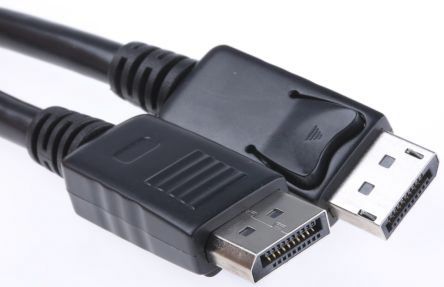So this happened to me recently, and I figure I should admit my mistakes when I make them. Part of my job is doing front end of first response IT support for my company. This means that if there is a technical issue of some variety or the other, I’m the first call. It’s something that I have always been reasonably good at, and I like to think that I know what I’m doing 90% of the time. The problem arises when the other 10% comes up. Such was the situation that I encountered a while ago. We had a person start at our office recently, and there was a small tech issue. I was called in to assess the situation. The underlying problem was that the person couldn’t get their secondary monitors to project the images from their computer. Fair enough, This is something that I deal with every once and a while, even in my own home. The one thing that I always always ALWAYS advise people to do is to check the physical connections to their devices. For these purposes, let’s forget about wireless devices, which still need a dongle to connect properly, and also because I don’t know of any wireless monitor solutions.
1) Check your settings – Computers for all of the brilliant things that they allow us to do, still are reasonably basic at connection/communication issues. If you have connected your computer to a secondary monitor, it won’t transmit the desktop unless you tell it to. For you Windows users out there, that can mean that you have to right click, then click on Display Settings. Likely if your monitor is connected correctly you will see a pop-up box with both your monitors. All you have to do is scroll to the bottom where it says “Multiple displays” and then play with the settings in the down menu until you get what you want. For those of us in Mac world, the operation is fairly similar. you can Cmd+Space and type in “Display settings” into the search bar. That will take you to the Display settings where, again, once you fiddle with the settings you will be able to transmit to your ancillary screen.
2) Check the connection between devices – with most ancillary devices; you will need to connect a cord between the two. Again, we’re not paying attention to Wireless devices here, but even they need a dongle to connect correctly. Sometimes I have had it where the computer I’ve been looking at has had the wires between screen and computer not attached correctly. Depending on what cable you’re using they can be a bit stubborn to get into place properly, so it’s important to make sure that you triple check the connection of the wires on your computer and your monitors. I should probably also mention that this is a lesson that I am struggling to learn despite multiple opportunities. Last weekend, I was having an issue connecting to the screen in my home office. I did all the things that I’m talking about here only to realize that the cable between my computer and my docking station had come loose. No wonder it didn’t work.
3) Check the docking station (if there is one) – Another place where you could lose connection is in your docking station. The one proviso I offer here is that if you don’t have a docking station, you don’t need to worry about this part. Some docking stations can be difficult to secure properly. Some need to be locked into place, and if it’s not done right, then the computer will not connect properly. If it’s not connected properly, it won’t be able to connect to the screen (s). On occasion, I have had difficulty getting my docking station to work correctly. I will admit it was early in the morning and the caffeine hadn’t quite hit my brain yet…..so it can happen to anyone….it can…
I will admit, when I walked into this person’s office, I was walking with some confidence in my abilities. I saw that the monitors weren’t working so I checked the connections, all was well. Checked the docking stations and all was good there. Went into the settings and found that there were no secondary screens at all. Panic was about to ensue when I decided to check the connections one more time, and I saw it. See the thing about electronic devices is that, without power, they tend not to work as well. This was the case here as BOTH monitors were not plugged in. I promptly put on my dunce cap and explained this to the user I was helping. They laughed at me a little, and I plugged the monitors into the outlet. Shockingly when they had power, they sprung to life. The lesson for you is always to check EVERY connection so that you know that it works properly. The lesson for me is not to take ANYTHING for granted — just one post this week folks.
Have you ever been stymied by simple connection issues?
Let me know in the comments section below. If you like this blog post and want to see more, you can follow me on Social Media (LinkedIn, Instagram, and Facebook @jasonlovefiles) or Subscribe to my blog to get new content delivered directly to your mailbox.

